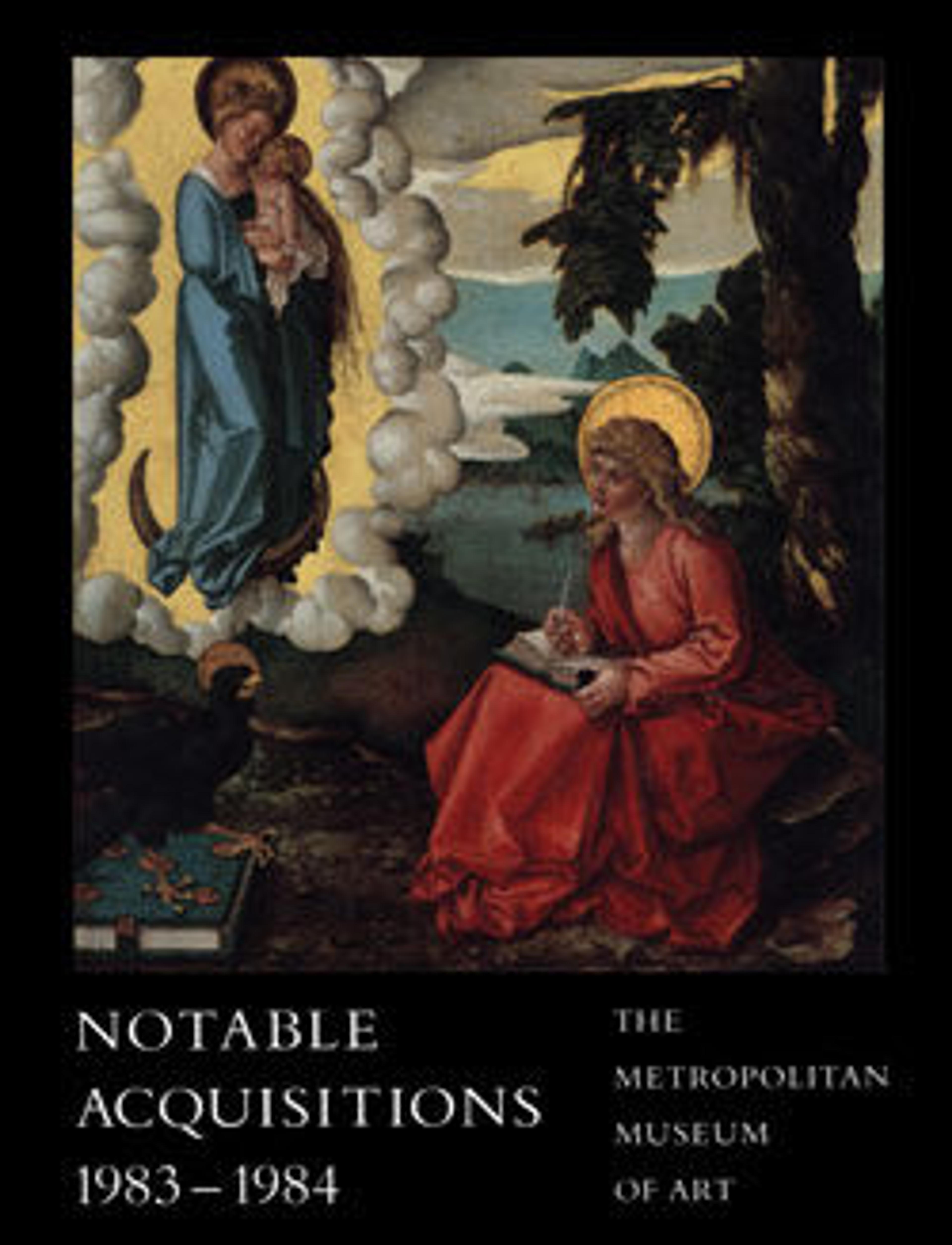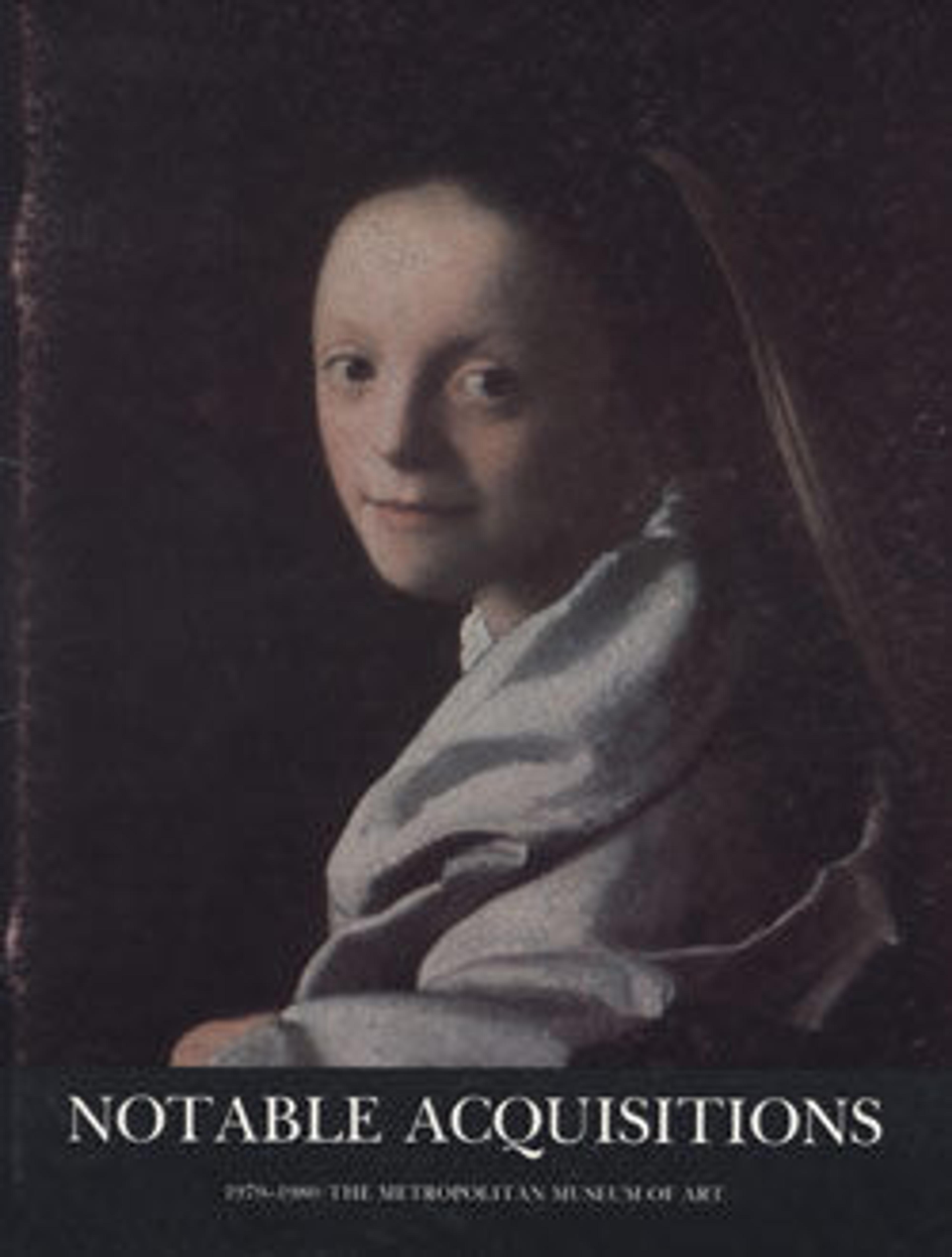
Notable Acquisitions, 1983–1984
Each year Notable Acquisitions is published as an adjunct to the Annual Report. Whereas the Annual Report provides extensive coverage on the activities of most Museum departments, with a complete list of new accessions, Notable Acquisitions is intended to single out those works that we deem notable, quite literally, and that merit fuller explanatory texts. It is understandable but no less regrettable, therefore, that in some years, owing to the paucity of the Metropolitan's acquisitions funds, certain departments can neither afford objects of real distinction nor even find themselves in the happy circumstances of receiving major gifts or bequests. In 1983–84, fate has dictated that several departments, which during other fiscal years could demonstrate support from loyal donors or draw on various funds for outstanding purchases, are not represented. Oddly, they are the three departments that deal with antiquity: Ancient Near Eastern Art, Greek and Roman Art, and Egyptian Art; all, ironically, have been in the limelight within the past eighteen months as a result of major installations of their permanent collections.
Occasionally, the acquisition of a very few objects or even of a single extraordinary one completely exhausts the Museum's financial resources. The superb Saint John on Patmos by Hans Baldung Grien, illustrated on the cover of this publication, falls into this category. That the picture should have preempted other possible purchases we readily forgive, so important is it to the Museum's holdings of German paintings, to which it adds a wholly new dimension. This was understood by an impressive number of magnanimous friends, whose names appear on the label so that they might be acknowledged by viewers of the picture, each of whom will undoubtedly derive benefit and enjoyment from it.
Brooke Astor, counted among the donors of the Baldung Grien painting, is also linked to the purchase of an exceptional, indeed unique, helmet, a sallet that was allegedly forged, gilded, and enameled for Boabdil, the last Nasrid king of Granada, toward the end of the fifteenth century. The Museum acquired the work from the armory of Lord Astor of Hever, and we are most grateful to The Vincent Astor Foundation for its generous funding.
The Cloisters Fund enabled the Department of Medieval Art and The Cloisters to purchase fifty-two delicately painted playing cards—the earliest known complete set—dating from the late fifteenth century, as well as a precious, exquisitely wrought saltcellar made in France in the mid-thirteenth century.
Although The Jack and Belle Linsky Collection was accessioned in 1982, objects from it appear in this issue of Notable Acquisitions, as only now has it been comprehensively photographed, studied, published, and installed. Full due to this magnificent gift is given both in the Annual Report and in individual entries here. The entire collection is reproduced in the catalogue published by the Museum in June 1984 to coincide with the opening of The Jack and Belle Linsky Galleries.
Met Art in Publication
You May Also Like
Press the down key to skip to the last item.
Citation
De Montebello, Philippe. 1984. Notable Acquisitions, 1983-1984. New York: Metropolitan Museum of Art.




